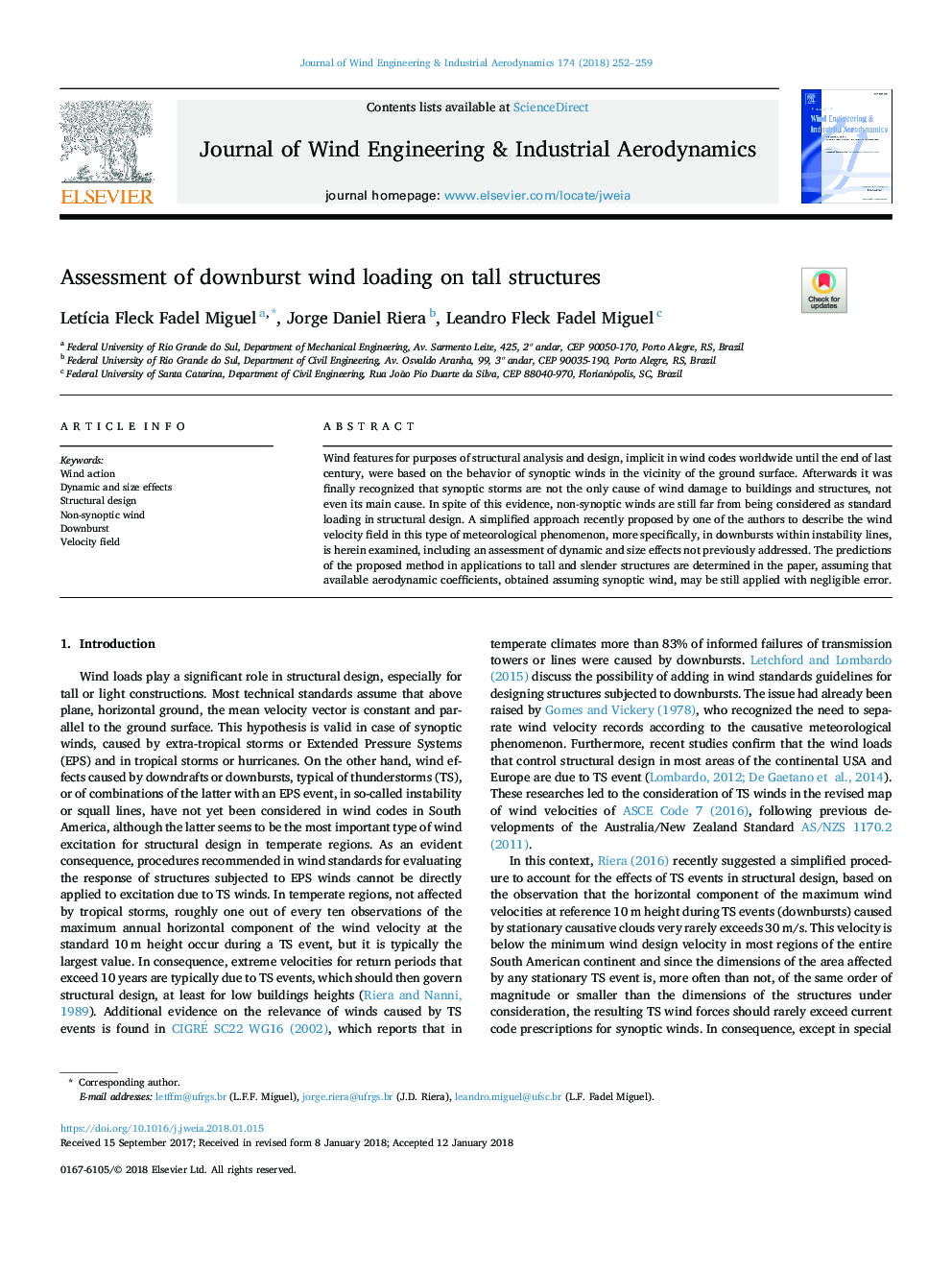| Article ID | Journal | Published Year | Pages | File Type |
|---|---|---|---|---|
| 6757080 | Journal of Wind Engineering and Industrial Aerodynamics | 2018 | 8 Pages |
Abstract
Wind features for purposes of structural analysis and design, implicit in wind codes worldwide until the end of last century, were based on the behavior of synoptic winds in the vicinity of the ground surface. Afterwards it was finally recognized that synoptic storms are not the only cause of wind damage to buildings and structures, not even its main cause. In spite of this evidence, non-synoptic winds are still far from being considered as standard loading in structural design. A simplified approach recently proposed by one of the authors to describe the wind velocity field in this type of meteorological phenomenon, more specifically, in downbursts within instability lines, is herein examined, including an assessment of dynamic and size effects not previously addressed. The predictions of the proposed method in applications to tall and slender structures are determined in the paper, assuming that available aerodynamic coefficients, obtained assuming synoptic wind, may be still applied with negligible error.
Related Topics
Physical Sciences and Engineering
Energy
Renewable Energy, Sustainability and the Environment
Authors
LetÃcia Fleck Fadel Miguel, Jorge Daniel Riera, Leandro Fleck Fadel Miguel,
